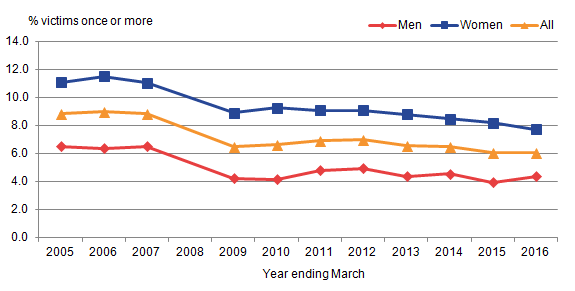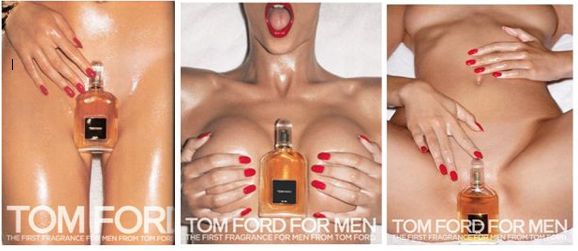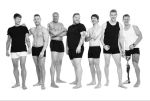Sexual objectification of people generally is based on their sexual attributes. Women are far more likely to be objectified than men and judged by a perceived sexual attractiveness rather than values such as intellectual ability. “The nature of gender portrayals, with female characters most commonly depicted as young, attractive and sexualised”. (Oliver and Raney, 2014, 83) Sexual objectification of women is found in media, advertising, as well as newspapers. Many women are sexually objectified and treated as an object to be valued for its use by others. It occurs as when a women’s body or body parts are singled out and separated from her as a person and she is viewed primarily as a physical object of male sexual desire (Szymanski, Moffitt and Carr, 2010)
Language is also a very strong factor; there are many different types of languages used in the media. Language is a very strong tool within the media and society as it is an influence on our way of thinking, seeing and interpreting the world around us. The language you use is also based on the industry you choose whether it is in television, radio, journalism, marketing etc. However when working in these businesses it is important to be aware of different ways people speak with one another through social media, such as social media memes, this is a concept people send to one another weather it is a funny image, email, video. Theirs also social media slang, words such as ‘fam’ which is a shorter word used for family, as well as words such as ‘on fleek’ which is used if something or someone is on point.
However for sexual objectification these words might be used differently, especially within gender. Gender and language is very important however it is also important how a different gender interacts with facts such as age, class, ethnicity, and race. It is stated that the language they use in the media is not a reflection of society but constitutive of that reality, through processes of negotiation, modification, and restatement were all the writers, speakers, reports are involved. When it comes to language and gender there has been a division that sex is physiological and gender is cultural. However what makes maleness and femaleness stands for is based in different societies and cultures. They portray women as sex objects and base it on their appearances rather than their intellect capabilities for example referring to a woman as ‘a blonde’. Also defining a women at home as a ‘mother of three’ which show the affects media has on the public. (Litosseliti, 2014) Essentially media consumers allocate cognitive recourses to the messages they choose to process, however there is a boundary to how much they process, so it is usually spread among attention, encoding, storage, and retrieval. (Oliver and Raney, 2014, 6)
Women frequently face sexual objectification in daily interpersonal interactions, behaviours like catcalling and whistling, sexually insinuating stares, leering, and inappropriate sexual comments made about a woman’s body as unwanted forms of body evaluation. (Rooney, 2016) Social media is a very big factor and influence on the public. For example on sites such as Google, YouTube there are many videos and advertisements on sexual objectification. These social media websites such as twitter, face book, Instagram, blogging is a good way to vent emotions such as anger, social frustrations and cause feelings, however as these messages get bigger in the media it becomes beliefs, and world views and when pictures of women are being shared constantly it becomes the attention point. And when this comes to sexual objectification the nature of gender portrayals, with female characters in the media are most commonly depicted as young, attractive and sexualised. However when it comes to male characters they are more depicted in ways displaying aggression, toughness, and sexual callousness.(Oliver and Raney, 83, 2014) which shows inequality and discrimination as women are always in the eye in the media when the topic comes to sexual themes, and because of this young adolescence females and adults feel the need to prove themselves to people.
These are big influences in the media, though there are many other positive parts. As there can be many other emotionally arousing messages in social contexts, including the related to consumer, political, and health behaviour, which would benefit other people and influence and provide them with research, and bring positive emotions like hope and pride which show positive attitudes and behaviours. As systems such as blogs are a very good platform in order for young adolescence, adults and other individuals to share their opinions, feelings and thoughts with one another because of the media presenting females and setting standards on how they should look. In this case women can share their judgment, pictures of themselves and share their opinion that everyone is diverse and have different skin colour, weight, and looks are different which is totally normal. And showing support and helping to one another can help people grow their confidence, and self esteem. Plus blogs are also a network for participants to express their distrust of the news and the media and their discontent with politics. This is a very diverse system that diminishes barriers in cultural participants, this is a superior approach as many people whether it is a women being sexualised or men, people from different religions, and beliefs are not being judged and critiqued as they are within the news ad media. (Fuchs, 2014, 62) Yet politically networks such as “Google and face book are based and targeted advertising models and commercial culture, which results in huge profits of these companies” (Fuchs, 2014, 61) It is also stated that fan communities like spending their work time and free time consuming popular culture, they tend to justify this behaviour as a form of political resistance. However any act by someone against a women’s will, act in an inappropriate behaviour and humiliate her, and make sexual gestures are also objectifying the women. Some of these behaviours are now commonly referred to as micro aggressions, which mean that the women are being sexually objectified by the perpetrator.
Within the media, television, newspapers, online websites, it is said that ‘In men’s culture, it’s acceptable to objectify women’. (Gaddis, 2018) And this is shown in many different ways, as in television for example it is expressed that it is a cultural norm that it is more acceptable for boys to accumulate sexual experiences then it is for girls as male characters are more likely to initiate sexual behaviours than female characters. However on the other hand it was also messaged and claimed on the media and television that women are more based and concentrated on their physical appearance, and secondly most frequent statistics was that being sexual is a characteristic of masculinity, these are two different statements. As one of the aspects to sexualising women is expressed by the clothes they wear such as dresses and shirts, as it is said that these are linked to sexual intent, attractiveness, dominance, and fitness. As men have different perceptions of women depending on what they wear, for example a woman wearing a red t-shirt compared to other colours shows that they looked more attractive and sexual. (Johnson, Lennon and Rudd, 2014) It is argued that red is associated with sexual approachability due to cultural pairings of red and female sexuality such as red light district, sexy red lingerie, which women models wear all the time on television which attract men. However it is also argued that Male models wearing red were also rated more attractive than male models wearing white. This shows that body image and the type of clothing you wear is a very big influence on a lot of individuals.
Sexually objectifying women can lead to many health issues and problems. Experiences of sexual objectification have been linked to psychological distress among women. For example, there is an extensive body of literature linking poor self-esteem, poor body image, and disordered eating. (Lustig, 2012) Many mental health risks can appear that disproportionately affect women such as unipolar depression, sexual dysfunction, and eating disorders and depressive symptoms. These Issues associated with body image and eating disorders often stem from a desire to attain the level of physical attractiveness and apparent perfection reflected in the media and advertising industry. As seeing yourself as an object can lead to low self esteem, social anxiety and can even lead to habits such as self harm. (N-Q, 2015) Because of these points, there can be many individuals with health problems and risks, as of this we compare ourselves to others who we believe are better than ourselves such as being thinner or more attractive, which can engage in both non-risky and risky behaviours such as extreme weight control to try to meet the expectations of others. As after bodies are treated as objects to be evaluated and perceived by others, and self-objectification occurs when individuals look upon themselves as objects to be evaluated by others. For example eating disorders is a big health issue and when looking at the ‘perfect bodies’ in the media it has a big affect which causes them to weighing, sucking in the abdomen, tapping it for flatness. As well as creating a negative behaviour was they may avoid looking in the mirrors, and avoiding situations where they have to show their body parts. (Johnson, Lennon and Rudd, 2014) Society has a very big impact on this as they always promote weight loss will improve people’s self esteem, and they will be more respected and worthy. (Mehler, and Andersen, 2017) however this isn’t realistic as no one has the same body and this is more psychological as it is all on the mind, plus individuals who diet half are not even overweight, but are worried on their image. (Jade, 2002) Men on the other hand concentrate more on muscular dissatisfaction as more than thinness men are more likely to be worried with body composition such as muscle ratio. Unlike females they are more satisfied with higher body weight to a certain extent. (Mitchison and Mond, 2018)
Statistics
– 1.6 million people in the UK are affected by an eating disorder
– 11% of the 1.6 million are male
– 1 in 100 women aged between 15 and 30, are affected by anorexia
(Priorygroup.com, 2018)
Which shows that women are highly affected by health issues such as eating disorders way more than men, which is why they might have chosen the option to limit the amount of food eaten, or lesser the food portions, as a strategy to overcome with the situation.
PORNOGRAPHY INDUSTRY/ FILM INDUSTRY
The pornography industry is also a very big platform that grosses about $10 billion a year in and contributes more to the objectification of women than a simple advertisement
Pornography is widely viewed and consumed by college aged (ages 18-24) males.
70% of men between the ages of 18 and 24 visit “adult sites” each month. This is also a very important factor as a lot of individuals visit these sites, which is another aspect that influences people in a inappropriate way and the effects can be tragic. It can lead to many mental illnesses within different individuals, as well as marriage, family and the community. However some may enter these sites to forget about their anxiety, boredom and escape from their bad feelings, yet this leads to Unfulfilling behaviour and emotions, and addiction.
For example advertising women, marketing, and the fashion industry have created new types of woman that does not exist in the real world. And create unrealistic photographs were women have no blemishes and has perfect skin, have attractive thick legs, thin waists, big breasts and radiant skin. (Sugget, 2016)

For example, in these images Tom Ford which is a very high brand is advertising his new perfume for men. Viewing these images of an uncovered headless woman, this concentrates on their body. View points about this are that every woman, are objectified as a collection of body parts and sex organs within the media. Companies use women’s body parts to sell their products no matter what they are trying to sell. These make it harder for other women in the community to be confident with their bodies as they are ashamed of going outside, doing things such as breast feeding in public for instance. (Vivian Englund, 2015)

This is another magazine of self objectification. A woman with a red dress which emphasizes that she has a very slim body and a prefect figure. Unlike most women in the society this model has the perfect hair, no blemishes, no fat on her body. This is a very common example of what models look like on most magazines, which are to set the standard for what perfect, sexy women should look like. When looking at magazines such as cosmopolitan the focus is usually on the physical appearance of the bodies instead of the information and headlines, which usually has zero to do with the actually imagery. The main question is that within every woman we see within advertisement, media, TV, how do these pictures compare with what we see when we look at the real women around us? (Storify, 2018) This can cause rude and unpleasant behaviour and thoughts on women when looking at their bodies but also objectifying other women to look at the similarities as well as the differences. This can cause attitude towards other women’s participation in self-sexualizing behaviour. (Ally Hickson, 2016) which can also increase risks for depression and anxiety, as well as mood swings. As if a woman has a partner she may feel pressured to satisfy him by looking a certain type of way, especially after what her partner see’s on the media. Because it is believed that “it’s a woman’s role to satisfy her partner sexually.” However this can cause the woman to be self conscious and less comfortable in front of their partners, which can cause them to less likely to refuse sex, as well as to communicate their sexual needs or actually enjoy sex. Because after a man has observed and watched how women are shown in the media they might have a new image and idea on how they should look, and because this might not be the same in reality when they see the image they thought they would see it can cause them to feel frustrated and angry, which then can cause the women to be irritated and depressed. Which can worsen the relationship as when a women is depressed she may feel anxious, bored, empty and useless, as well as loss of sexual desire.
To outline this topic, it is a fact that TV, news, magazines, social media has a big influence on people which can change the way they feel, act, and think about themselves and other people as body image is a public health issue. However on the other hand social media is not just a place to view pictures but can also be used to grow businesses and have conversations and connections with people. As there is a number of fitness and wellbeing feeds and pages, we’re different communities of women can come together and share tips, ask for advice, as well as make workout routines together and encourage everyone to be healthy.
-These are some blogs, news papers, and social media, surveys on health as well as sexual objectification.
http://www.bbc.co.uk/news/health
http://www.careukgroup.com/news
http://www.dailymail.co.uk/tvshowbiz/article-5223025/Samantha-X-helps-curvaceous-sex-worker-confidence.html
http://www.dailymail.co.uk/news/article-5021639/Mother-writes-post-son-s-severe-bullying.html
http://www.mirror.co.uk/lifestyle/health/yo-yo-dieting-no-no-11477329
http://www.telegraph.co.uk/health/
http://www.howtothrive.org/schools-resilience-engagement-programme-spring-2017/
Click to access ENCY.OBJTHEORY.CASH.pdf
https://www.girlguiding.org.uk/social-action-advocacy-and-campaigns/research/girls-attitudes-survey/?gclid=Cj0KCQiAvrfSBRC2ARIsAFumcm89v_cCUYjLNKs4tzRNNvp2z6aJ-NaVg5-p2QX6c5wT-G9oq5c6RgQaAttVEALw_wcB
https://storify.com/anniebehnke/media-s-influence-on-self-objectification
http://msmagazine.com/blog/2012/07/03/sexual-objectification-part-1-what-is-it/
References:
Ally Hickson, A. (2016). [Online] Available at: http://www.refinery29.com/2016/08/119257/women-body-acceptance-study [Accessed 7 Jan. 2018].
Books.apa.org. (2018). Cite a Website – Cite This for Me. [Online] Available at: https://books.apa.org/education/ce/sexual-objectification.pdf [Accessed 5 Jan. 2018].
Fuchs, C. Social media a critical introduction.
Gaddis, J. (2018). Why Men Objectify Women -. [Online] The Good Men Project. Available at: https://goodmenproject.com/featured-content/why-men-objectify-women/ [Accessed 5 Jan. 2018].
Johnson, K., Lennon, S. and Rudd, N. (2014). Dress, body and self: research in the social psychology of dress. Fashion and Textiles, [Online] 1(1). Available at: https://link.springer.com/article/10.1186/s40691-014-0020-7 [Accessed 7 Jan. 2018].
Jade, D. (2002). EATING DISORDERS AND THE MEDIA. [Online] Available at: https://view.officeapps.live.com/op/view.aspx?src=http%3A%2F%2Fprofcharmaine.pbworks.com%2Ff%2Fmedia%2Beating%2Bdisorders.doc [Accessed 7 Jan. 2018].
Litosseliti, L. (2014). Gender and Language. Theory and Practice, [Online] p.15. Available at: https://books.google.co.uk/books?id=KUfKAgAAQBAJ&dq=sexisism+language+media&lr=&source=gbs_navlinks_s [Accessed 7 Jan. 2018].
Lustig, K. (2012). Objectification Theory and Sexual Health among Women. [Online] Available at: https://scholarworks.umb.edu/cgi/viewcontent.cgi?article=1072&context=doctoral_dissertations [Accessed 7 Jan. 2018].
Mehler,, P. and Andersen, A. (2017). Eating Disorders. A Guide to Medical Care and Complications 3rd edition. [Online] Available at: https://books.google.co.uk/books?id=m-05DwAAQBAJ&source=gbs_navlinks_s [Accessed 7 Jan. 2018].
N-Q, P. (2015). What is Objectification. [Online] GoodTherapy.org Therapy Blog. Available at: https://www.goodtherapy.org/blog/psychpedia/definition-of-objectification [Accessed 5 Jan. 2018].
News, S. (2018). Sexual objectification in the media needs to stop. [Online] SOUTHERN NEWS. Available at: https://thesouthernnews.org/2015/02/15/sexual-objectification-in-the-media-needs-to-stop/ [Accessed 5 Jan. 2018].
Oliver, M. and Raney, A. Media and social life.
Priorygroup.com. (2018). Eating Disorder Statistics | Anorexia treatment Priory Group. [Online] Available at: http://www.priorygroup.com/eating-disorders/statistics [Accessed 7 Jan. 2018].
Rooney, E. (2016). The Effects of Sexual Objectification on Women’s Mental Health. [Online] Available at: https://steinhardt.nyu.edu/appsych/opus/issues/2016/spring/Rooney [Accessed 7 Jan. 2018].
Sugget, P. (2016). The Objectification of Women in Advertising. How Advertising Often Treats Women as a Commodity. [Online] Available at: https://www.thebalance.com/advertising-women-and-objectification-38754 [Accessed 7 Jan. 2018].
Storify. (2018). Media’s Influence on Objectification of Women (with images) • anniebehnke. [Online] Available at: https://storify.com/anniebehnke/media-s-influence-on-self-objectification [Accessed 5 Jan. 2018].
Szymanski, D., Moffitt, L. and Carr, E. (2010). Sexual Objectification of Women: Advances to Theory and Research 1ψ7. The Counselling Psychologist, [Online] 39(1), pp.6-38. Available at: https://books.apa.org/education/ce/sexual-objectification.pdf [Accessed 8 Jan. 2018].
Vivian Englund, V. (2015). SOUTHERN NEWS. Sexual objectification in the media needs to stop. [Online] Available at: https://thesouthernnews.org/2015/02/15/sexual-objectification-in-the-media-needs-to-stop/ [Accessed 7 Jan. 2018].







